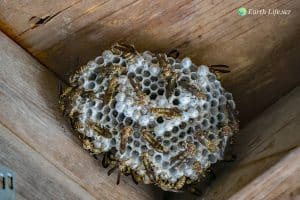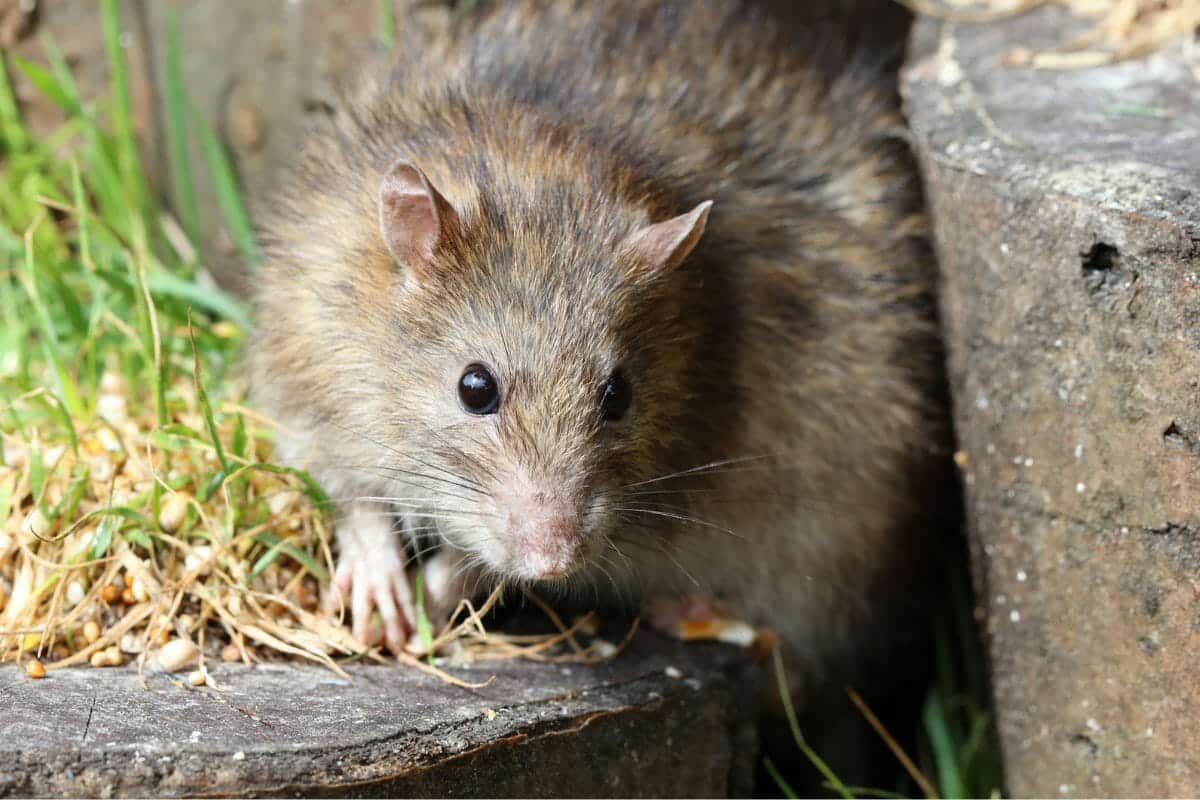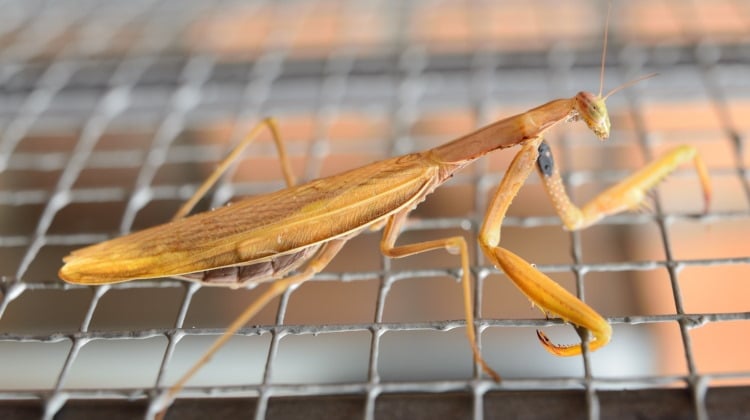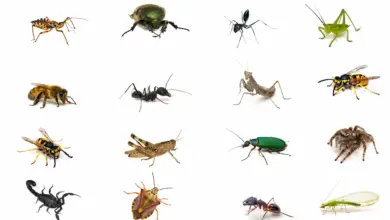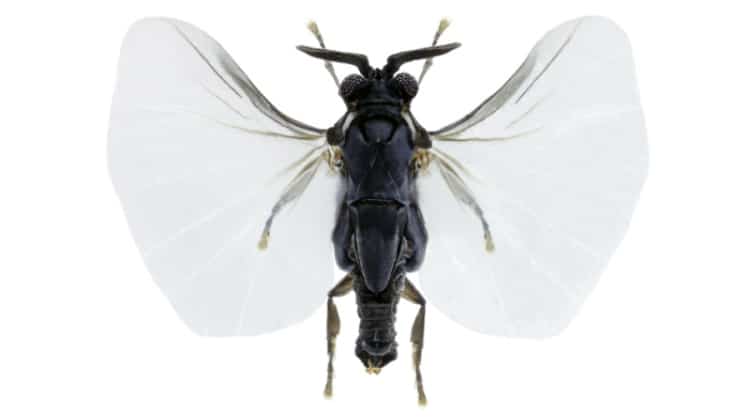Insects With Stingers That Fly
The 12 Most Dangerous Insects With Stingers That Fly
Insects are weird. Amazing, but weird. They come in all shapes and sizes. Many are armed with stingers. Many can fly.
Most of these flying, stinging insects belong to the order Hymenoptera. Insects in this order include bees, wasps, hornets and fire ants.
The Halloween song “one eye, one horn, flying purple people eater” may just have got its inspiration from this list.
Read on to discover 12 of the most dangerous insects with stingers that fly that you will not want to mess with.
#12 Sweat Bees
Did you Know?
The Schmidt Pain index was developed by Justin Schmidt, an entomologist that sought to discover what had the most painful insect sting. The scale ranges from 1.0 (mildly irritating) – 4.0 (extreme agony).
There are more than 500 different species of sweat bees throughout North America. Some, such as Agapostemon sericeus, are metallic green from head to toe.
Research at Maryland Department of Natural Resources suggests that, unlike other bee species, sweat bees tend to live on their own in nests in the ground.
As the name suggests, they are attracted to human sweat. But don’t worry, their preferred food of choice is plant pollen.
Sweat bees will only sting if provoked. The pain is mild, but seek medical advice if stung multiple times.

#11 Bumblebees

A staple garden pollinator found across the globe, the bumble bee is easily distinguished by its large, fuzzy rump.
Only workers and the queen have a stinger, which they only use in self-defense.
If a bumble bee stings a human, a small quantity of venom is injected into the body. Fortunately for us, the pain is short-lasting, albeit severe. Local swelling may occur, as well as itching.
Contrary to belief, a bumble bee has a smooth stinger. This means the insect can repeatedly sting if provoked. Thankfully, scientists at Pennsylvania University have confirmed that bumble bees are generally peaceful insects and will only sting if they feel threatened.
#10 Mud Daubers

Mud daubers are a collective term for certain families of wasps that build nests within muddy banks.
They are a solitary, docile species.
Although non-aggressive, mud daubers can deliver a painful punch that can cause a severe allergic reaction in some people. But this is rare.
Mud Daubers are very thin wasps with long pedicel (a structure that connects the abdomen and thorax). Some species have yellow stripes across the body.
Data collected by the University of Florida suggests that daubers are widely distributed across North America.
#9 Paper Wasps 
Paper wasps are social insects.
They scrape and chew wood into a pulp to form a papery, umbrella-like communal nest. Most species of paper wasps are brown with yellow markings.
Although they sting, they are non-aggressive insects. According to researchers at Clemson University, paper wasps are considered an important predator of crop pests, such as caterpillars.
The sting of a paper wasp is said to feel like a short yet sharp localized stabbing pain.
Did you Know?
Of the 1100 species of paper wasps found worldwide, only 22 can be found in the United States
#8 Velvet Ants
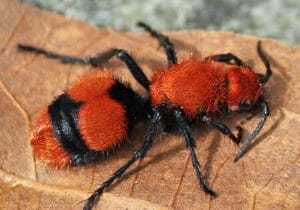
Despite their name, velvet ants are not ants at all. They’re wasps.
Their fuzzy bodies are black and adorned with strips of bright warning colors.
Approximately 8000 species of velvet ants are distributed worldwide, with over 400 species found in arid regions of South and Western North America, including Mississippi.
Velvet wasps are solitary wasp. Females lack wings and spend most of their lives on the ground.
Males have wings and take to the air to seek out the wingless females.
Females are parasitic. They have evolved to lay their eggs on the pupae of other species. To enable this, females have a potent sting that paralyzes the helpless host.
Related articles:
- Difference between bugs and insects
- Do Insects Have Hearts?
- Do insects have a nervous system?
- What stages do insects have that mammals don’t
- Do insects have a backbone?
- Do insects have tongues?
Perhaps Alannah Myles’s song “Black Velvet” was about the velvet ant? After all, if stung, you may well be falling to your knees.
#7 Western Yellow Jacket Wasp

Western yellow jackets belong to the paper wasp family. However, they deserve their own position on this list.
Like other paper wasp species, they are a social species, living in paper-like nests around human settlements. They can be found in old rodent burrows or holes in walls. They are relatively common in western states of the USA.
Yellow jackets have striking yellow and black markings strewn across their bodies, a warning sign to all to stay clear. When attacked or threatened, yellow jackets will release pheromones, encouraging the rest of the nest to follow attacks.
Famed entomologist, Justin Schmidt, compared the sting of a western yellow jacket wasp to quote “extinguishing a cigar on your tongue” . Because everyone has tried that, I’m sure.
Did you Know?
An entomologist is a scientist that studies insects.
#6 Cicada Killers
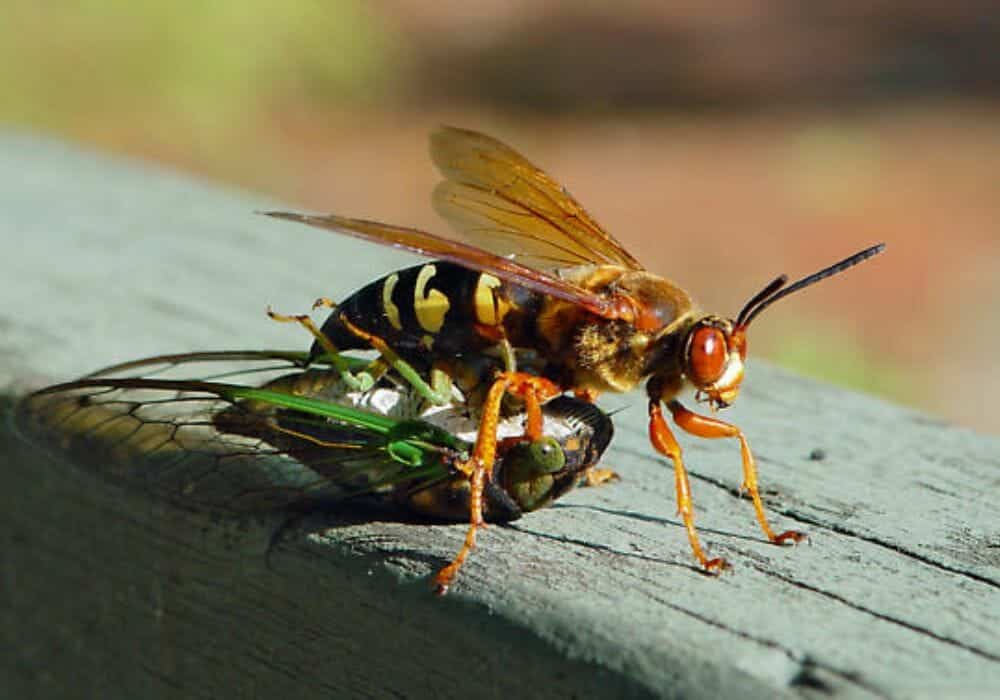
With the word “killer” in the title, you know this can’t be good.
But don’t judge a book by its cover. Or, in this case, a wasp by its name.
Despite doing exactly what it says on the tin (kills cicadas), the cicada killer is generally mild-tempered and will not sting unless provoked.
There are only two things on the mind of a cicada killer: digging burrows and providing young with freshly paralyzed cicadas. Mom of the year award, tick.
Cicada killers are solitary species, and only the female stings.
Cicada killers are found in the Eastern United States.
#5 Western Honey Bees

Responsible for over 1/3 of all pollination within the United States, western honey bees have been a valuable asset to humanity and our ability to cultivate crops. Today, western honey bees can be found on every continent (except Antarctica).
These honey bees are not native to the Americas. They displace native species of bees and birds whilst pollinating invasive plant species.
The sting of a honey bee is incredibly painful, even fatal to those allergic (as painful as stung by a puss caterpillar)
When the bee sting, part of the abdomen (including the venom sac) is ripped from the bee’s body. This is because the stinger is barbed and cannot be dislodged from the tissue once penetrated.
Attack pheromones are released, alerting the rest of the colony to join the offense.
#4 Asian Giant Hornets

At over 2 inches long, they are the world’s largest hornet species.
Native to Asia, the giant hornet has now spread to the Pacific Northwest of North America.
They are easily recognizable – a light orange head, a dark brown thorax, and an abdomen of alternating dark brown and orange stripes.
Asian Giant hornets are social and can coordinate attacks on honey bee colonies. Less than 50 hornets can wipe out a colony of thousands of bees in mere hours.
The potent venom of the giant hornet contains neurotoxins. Masato Ono, an entomologist at Tamagawa University, compares the sting to being stabbed in the leg with a red hot nail.
Did you Know?
Neurotoxins are toxins that destroy nervous tissues, such as the brain and spinal cord.
#3 Warrior Wasps

Warrior wasps have one of the most painful stings recorded in the Animal Kingdom. Schmidt used just one simple word was used to describe the sting: quote “torture”. They are aggressive predators.
They are black or metallic blue, measuring no more than an inch. The abdomen is large and spear-shaped, connected to the thorax by a thin pedicel.
Did you Know?
A warrior wasp colony has numerous queens. Social insects normally have just one queen in a colony. The advantage of additional queens is the ability to form new colonies instantaneously.
They nest in a large cone nest high up in the tree canopy of Central and South America.
If a warrior wasp is under attack, especially from army ants, they scrape its mandibles (mouthparts) against the colony wall to warn other individuals. They’re also referred to as “drumming wasps” for this reason.
#2 Executioner Wasps
Another member of the paper wasp family deserves its own place on the list.
Going straight to second place, with one of the most painful insect stings recorded, is the executioner wasp.
This large stinging insect, neotropical wasp, is predominantly different shades of yellow, with brown stripes. They are found throughout Central and South America, in areas of woodland or humid zones.
Despite their size and potent venom, executioner wasps are not aggressive. They will attack as a colony if they feel threatened, causing localized necrosis (tissue death) and swelling.
Executioner wasps have found themselves in the spotlight, with adventure YouTuber Coyote Peterson demonstrating just how painful their stings are. You can watch the video on the link below:
#1 Tarantula Hawk Wasps
The top spot and winner of the most painful sting on the planet goes to the tarantula hawk wasp. Despite their potency, they remain docile around humans. The hawk wasp is set on one thing: tarantulas.
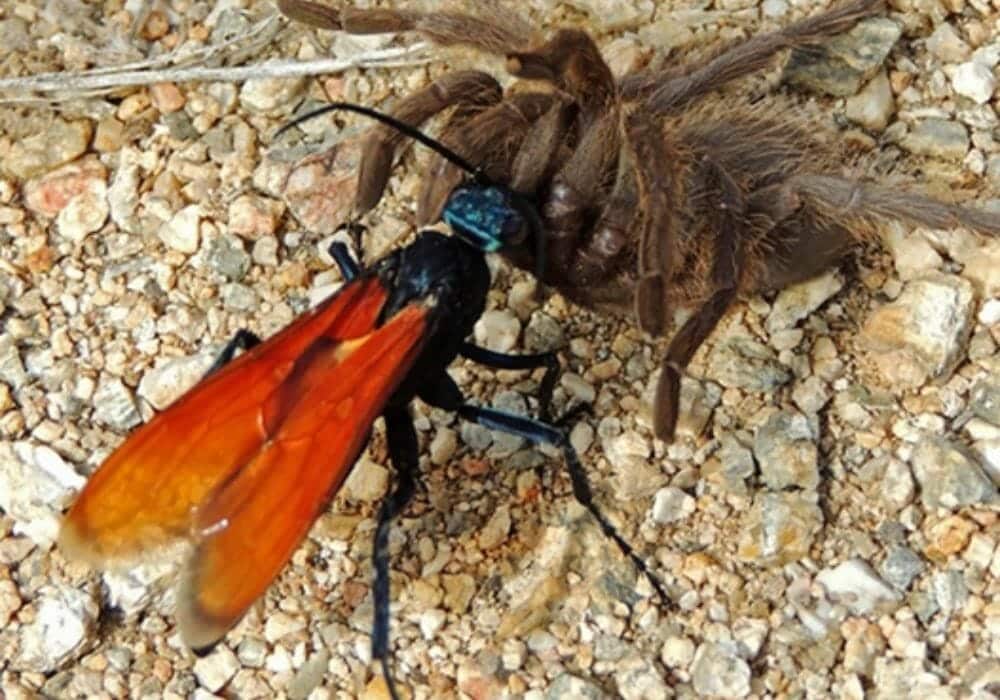
That’s right, these wasps actively hunt down the large, hairy arachnids.
But not to eat. Oh no, that would be far too easy.
Instead, the hawk wasp paralyzes the spider with her stinger and drags the helpless victim back to her underground lair. Here, she will lay a single egg upon the tarantula.
The egg eventually hatches and bores down into the spider’s abdomen, where it will feast on hemolymph and tissue.
Across Central and South America, over 130 species of hawk wasps have been identified. They can reach 11 cm and have metallic, iridescent markings.
The Schmidt sting pain index describes the tarantula hawk wasp as a quote “blindingly fierce and shockingly electric pain” Justin Schmidt.
Did you Know?
For the duration the wasp larvae feed, the spider is alive the entire time. The wasp larva instinctively leaves vital organs until the very end. Gruesome.
Conclusion
Our planet is home to some weird and outright scary creatures.
The order Hymenoptera has produced some of the most dangerous insects that not only fly but can sting you with a potent cocktail of venom.
If you have been stung repeatedly by any of the insects mentioned above, and your symptoms are not improving, seek medical help immediately.
References
- Department of Natural Resources, Maryland, Oct 2018
- PennState Extension, Sept 2021
- Clemson University, Cooperative Extension, College of Agriculture, Forestry and Life Sciences
- The University of Florida, Featured Creatures, Oct 2018
- Latin American insects and entomology, Hogue, 1993
- Smithsonian, BugInfo, 1999
- PennState Extension, Aug 2022
- Natural History Museum, What on Earth
Disclaimer
Earthlife.net does not provide medical advice. We do our best to help users understand the science behind living beings; however, the content in the articles and on the website is not intended to substitute for consultation with a qualified expert. By interacting with the website and/or our email service, you agree to our disclaimer. Remember that you must consult a specialist before using any of the products or advice on the web.

